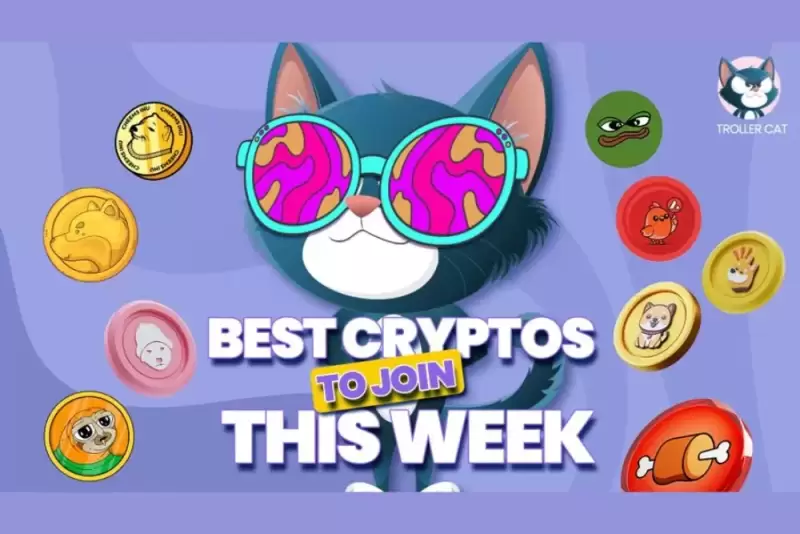 |
|
 |
|
 |
|
 |
|
 |
|
 |
|
 |
|
 |
|
 |
|
 |
|
 |
|
 |
|
 |
|
 |
|
 |
|
Cryptocurrency News Articles
ERC-404: Paradigm Shift in NFT Fractionalization Unleashes New Possibilities
Mar 25, 2024 at 11:34 pm
The ERC-404 standard, an innovative hybrid token implementation, has emerged in the NFT space. This unofficial Ethereum standard combines ERC-20 and ERC-721, introducing fractional ownership to NFTs and potentially addressing their liquidity issues. The Pandora project exemplifies this standard, utilizing a fungible ERC-20 token (PANDORA) and a unique ERC-721 NFT collection (Replicants). The mint-and-burn feature allows fractional purchases of PANDORA, automatically minting NFTs upon reaching a whole token equivalent. This opens up new possibilities for NFT integration into token projects and DeFi ecosystems.

ERC-404: A Paradigm Shift in Non-Fungible Token Fractionalization
The advent of Pandora, an experimental hybrid token, has ignited a surge of interest in the non-fungible token (NFT) ecosystem. Introducing the ERC-404 standard, Pandora seamlessly blends the fungibility of ERC-20 tokens with the uniqueness of ERC-721 NFTs, heralding a novel paradigm for fractional NFT ownership and liquidity enhancement.
The Essence of ERC-404
ERC-404, an unofficial Ethereum standard, harnesses the benefits of both ERC-20 and ERC-721 standards. By leveraging the fungibility of ERC-20 tokens, which govern token issuance on the Ethereum blockchain, and the distinct nature of ERC-721 tokens, ERC-404 creates a new standard for semi-fungible tokens that support NFT fractionalization.
Pandora: A Pioneering Implementation
The Pandora project exemplifies the transformative potential of ERC-404. It utilizes two assets: the ERC-20 token (PANDORA) and an ERC-721 token representing unique NFTs in the Replicants collection. Upon purchasing a PANDORA ERC-404 token, buyers automatically receive a Replicants NFT in their wallet. Each NFT possesses a rarity level denoted by the color of its box, with red signifying the rarest and green the most common.
The mint-and-burn feature of ERC-404 ensures that when a PANDORA token is sold, the associated NFT is burned. However, buyers retain the option to store rare NFTs when transferring PANDORA tokens. Conversely, when selling or transferring an NFT, only the fungible portion of the PANDORA token is transferred to the buyer's wallet along with the Replicants NFT, preserving the integrity of the PANDORA token.
The mint-and-burn mechanism enables fractional purchases of the PANDORA token. When a buyer accumulates sufficient fractions to form a whole NFT, an NFT is automatically minted and added to their wallet.
The Promise of Semi-Fungibility
ERC-404 opens up new avenues for token utilization on the Ethereum platform. It facilitates the exchange of non-fungible tokens, providing developers with a groundbreaking approach to integrating NFTs into token projects. This standard could catalyze the financialization of NFTs, particularly if existing ERC-721 NFT collections can be wrapped into interchangeable ERC-404 tokens.
The Competitive Landscape
Since Pandora's inception, several competitors have emerged, recognizing the transformative potential of ERC-404. Divisible NFT standard (DN-404) and Injective Protocol's CW-404 standard aim to capitalize on the hype surrounding ERC-404. Additionally, Solana's SPL-20 tokens mirror the functionality of ERC-404 tokens, redefining the NFT experience on the Solana blockchain.
Innovation and Opportunity
Creators and developers are enthusiastic about the potential for further innovation with the ERC-404 standard. It presents opportunities for integrating NFTs with the DeFi ecosystem, tokenizing in-game assets through native fractionalization, and introducing novel monetization models within the Metaverse.
Risks and Considerations
As with any emerging technology, ERC-404 is not without its risks. The standard has not been recognized by the Ethereum Foundation and has yet to undergo vetting through an Ethereum Improvement Proposal. This raises concerns about potential exploitation by malicious actors. Furthermore, the standard is still in its experimental phase, with a new v2.0-beta version under development to address bugs, optimize logic, and reduce gas costs.
Despite these risks, the immense potential of ERC-404 in unlocking NFT liquidity and fostering collaboration within the Web3.0 ecosystem warrants attention from investors. The standard could revolutionize the creation of digital assets on the Ethereum blockchain, setting the stage for a transformative shift in the NFT landscape.
Disclaimer:info@kdj.com
The information provided is not trading advice. kdj.com does not assume any responsibility for any investments made based on the information provided in this article. Cryptocurrencies are highly volatile and it is highly recommended that you invest with caution after thorough research!
If you believe that the content used on this website infringes your copyright, please contact us immediately (info@kdj.com) and we will delete it promptly.
-

-

-

- Trust Wallet will host an AMA on X, featuring representatives from 1inch and MoonPay
- Apr 03, 2025 at 12:40 pm
- Trust Wallet is set to host an AMA on X, featuring representatives from 1inch and MoonPay. The conversation will focus on the challenges and requirements of onboarding the next 1 billion users to the blockchain network.
-

-

-

-

-

-






























































